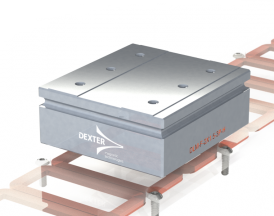What is Linear Motors and its comparison with Stepper Motors
A linear motor is simply an electric motor that uses a linear force mechanism to generate the required power for a particular application. In contrast to rotary electric motors (found in cars, appliances, and commonly used electrical appliances), linear motors generate their energy through strictly linear scientific principles; i.e. There is no torque or rotation to produce an accelerated force through the relationship of an electric current to a magnetic field. Linear motors are used for a variety of purposes, including high-speed rail, military weapons, spacecraft research, robotic technology, medical advancements, and automated engineering systems designed to produce mass quantities of specific products.
There are two main types of linear motors: low acceleration and high acceleration. Low speed motors are typically used for applications where durability is preferred over bursts of power or high electromechanical energy. This type of linear motor is designed for trains, automatic application systems, etc. High-speed motors are the more common of the two, and deliver higher speeds in less time; as used in firearms, military equipment, spacecraft propulsion and the like. The low speed linear motor is designed to accelerate the object to a constant and steady speed, while the high speed linear motor accelerates the object to a very high speed and then releases the object.
Typically, low speed linear motors are constructed with a system of windings on one side of the motor and a magnet on the other to create the electromagnetic repulsion needed to successfully apply the force; this is called linear synchronous design. High speed linear motors usually consist of a three-phase winding on one side and a wire on the other side of the motor to fulfill its intended technical purpose. This is called the linear induction design.
Linear motor Magnetics offer a number of advantages in this evolving world of technology. Whether the high performance application your business requires or your organization requires a low or high speed side motor system, linear motors offer faster acceleration and higher speeds, as well as a higher success rate with automatic accuracy, repeatability, and long-term reliability.
A linear asynchronous motor consists of an inductor consisting of individual cores with concentrated polyphase. The linear motor can be directly replaced by ball screw, hydraulic drive, pneumatic drive or cam drive.
A linear induction motor is basically what experts call a "rotating cell" induction motor. The difference is, the engine is open. Instead of generating torque from a cylindrical engine, it generates linear force from a flat engine. The shape and manner of movement changed, but remained the same as the cylinder. However, there are no moving parts, which most experts don't like. It has quiet operation and reduced maintenance, as well as a compact size that attracts many engineers. There is also a universal agreement which is easy to manage and install. These are all important considerations when thinking about what kind of device you want to build.
The thrust ratio of linear asynchronous motors varies mainly depending on size and power. The speed of a linear asynchronous motor varies from zero to several meters per second. Speed can be controlled. Stop, start and rewind is easy. Linear induction motors are constantly being improved upon and with improved control, lower life cycle costs, reduced maintenance and higher productivity, they are the choice of professionals. The linear motor is easy to use and easy to operate. They have fast response and high acceleration. Your speed doesn't depend on the friction of the socket, so it's easier to get speed fast.
A stepper motor is a special type of motor that moves in discrete steps. When one set of windings is energized, the motor moves one step in one direction, and when another set of windings is energized, the motor moves one step in the other direction. The advantage of a stepper motor is that the position of the motor is "known". If the initial position is known, the zero position can be determined.
Stepper motors are available in a variety of angular resolutions, and the roughest motors typically rotate 90 degrees per step. The high resolution permanent magnet motor can only handle about 18 degrees less. With the right controller, the stepper motor can be started in half steps, which is great.
The main complaint about stepper motors is that they usually draw more power than standard DC motors and are also difficult to maneuver.
Our Source:-https://sites.google.com/view/linear-motor-/home

Comments
Post a Comment